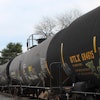Located in Rhinelander, WI, Laser Pros International (LPI) is one of the world’s largest distributors of laser printer parts and accessories. The company has grown tremendously since its origin in 1990 when it began out of president Steve Spencer’s home. LPI currently employs more than 100 people and its corporate headquarters occupies 40,000 square feet.
LPI’s concern for protecting the environment while reducing material and shipping costs has always been important.
Mike Egan, warehouse manager for LPI, began looking for a more economical packaging alternative for the shipment of its products in 2007. The rising cost and supply issues of its existing fabricated foam packaging became a real concern for LPI. In addition, the company was looking for a package that would be easier to recycle.
Above all, the delicate nature of the products required safe, dependable packaging. Laser printer parts contain fragile pieces that, if broken, can render an assembly worthless. LPI needed a new packaging solution that decreased the dimensions of the package and used recyclable protective materials without compromising protection or increasing material costs.
“We distribute domestically and internationally to a wide range of customers—from small service providers to some of the largest in the world,” says Egan. “Many of our customers require next-day delivery, so there is a real emphasis on damage-free products arriving in a timely manner.”
Sealed Air’s cushioning sales representative Mark Nennig and Korrvu® specialist Doug Graf introduced Egan to a packaging solution designed to meet those needs—a hybrid pack which used Korrvu retention packaging and NewAir I.B.® inflatable cushions on the top and bottom for additional protection.
Korrvu retention packaging uses a proprietary retention frame and elastomeric film to hold the items securely in place during shipment. The film membrane conforms to the shape of the product being packed, providing a versatile, custom-designed packaging solution. In addition, since the retention frame uses corrugated material for structure, the packaging stores flat to reduce storage requirements and recycles in the corrugated recycling stream.
The NewAir I.B. 200 inflatable packaging system is a fast, flexible and all-electric inflatable cushioning solution designed to increase productivity and free up valuable warehouse space. The packaging system automatically inflates and dispenses ¾-in height patented Barrier Bubble® cushioning material.
LPI’s new packaging process is simple. The corrugated boxes are assembled and a sheet of NewAir I.B. cushioning material is placed in the bottom of the box. The product is loaded into the Korrvu® retention frame by folding up the side flaps to loosen the film and form an insertion pocket, sliding the product between the resilient film and corrugated base, and folding the flaps down to tighten the film and hold the product securely in place. The insert is loaded into the shipping carton and a final sheet of NewAir I.B. cushioning is added to protect the smaller, more fragile parts of the product.
“The new Korrvu method is less complicated than our old method and more aesthetically appealing,” says Egan. “In addition, the Korrvu retention film serves as an extra layer of surface protection.”
The new process has substantially simplified the steps and reduced the resources necessary for LPI’s packaging process. Prior to switching to the new Sealed Air packaging solution, LPI needed to use various combinations of cut polyurethane foam, cut polystyrene, and polystyrene peanuts to protect its products during shipment.
The old process required more time, more material, and more costs. “Our old packaging method required three packagers to keep up with the packaging line and resulted in a bulky box with a high dimensional weight-based shipping cost,” said Egan. “We ultimately decided to test the protection provided by the Korrvu packaging because we knew it was recyclable and would decrease our package dimensions, which translates to customer savings in shipping costs.”
Working closely with LPI at Sealed Air’s Package Design and Development Center in Chula Vista, CA, packaging engineers developed a custom package design that met all of LPI’s specific needs. “In addition to performing ISTA 1A testing, we tested the packaging by shipping the products back and forth between the LPI headquarters in Wisconsin and the Sealed Air Package Design and Development Center in California,” said Egan. The new solution passed all the tests and Mike Egan was convinced to make the switch.
The entire process from introduction to full implementation took less than six months. As a result of successfully implementing the Korrvu packaging process, LPI’s packages now have smaller dimensions and require less material—making the packaging more environmentally responsible and cost-effective for the company and for its customers.
Because Sealed Air’s new packaging solution reduced the dimensional weight of each package by almost half, Egan estimates 25 percent savings on shipping costs. “Whenever we approach any packaging project, we want to make sure it offers an enhanced customer experience, improved efficiencies, and reduced costs to our product,” says Egan. “In this case, we did all three. In addition, the package provides superior presentation. We couldn’t be more pleased with the result.”


















